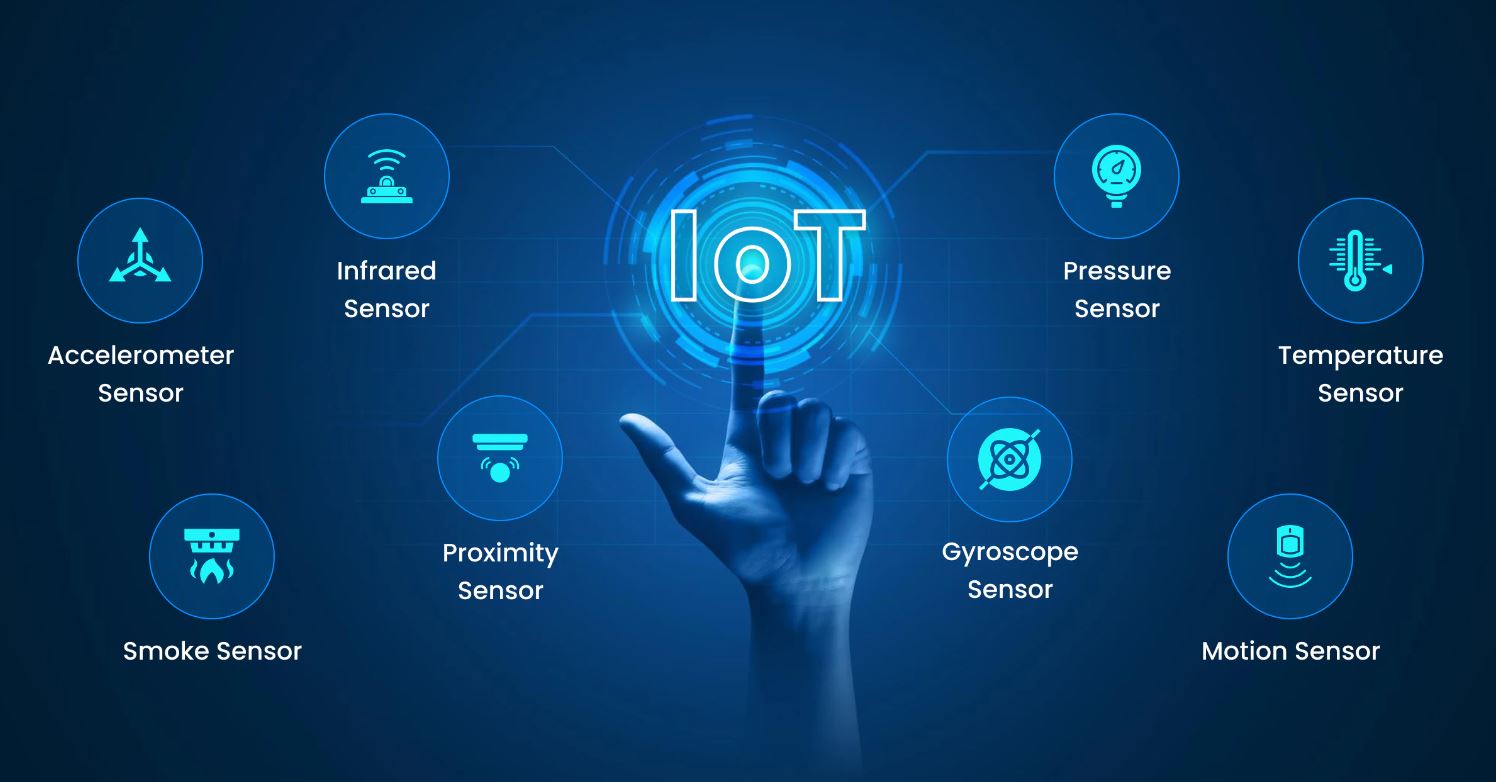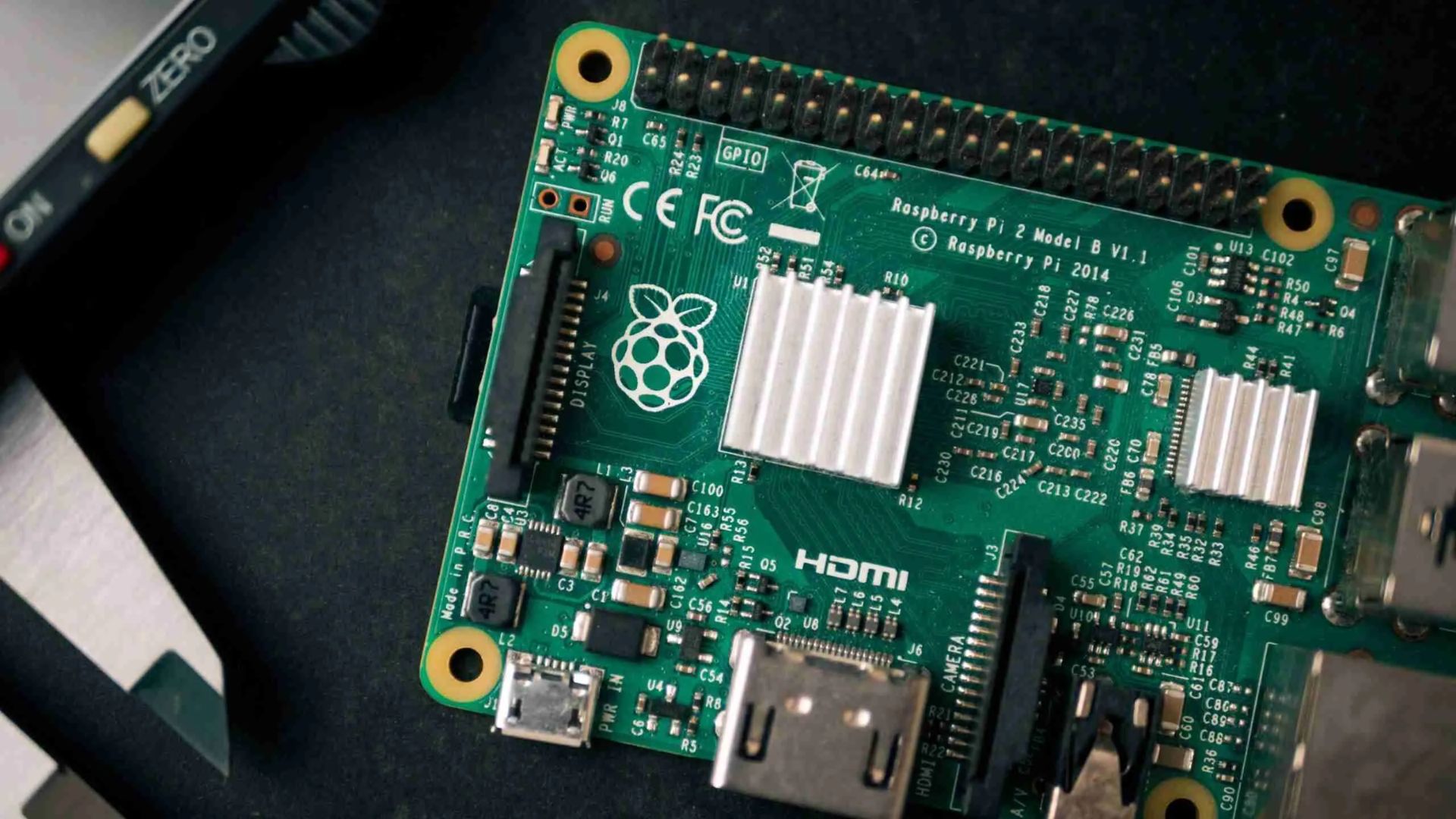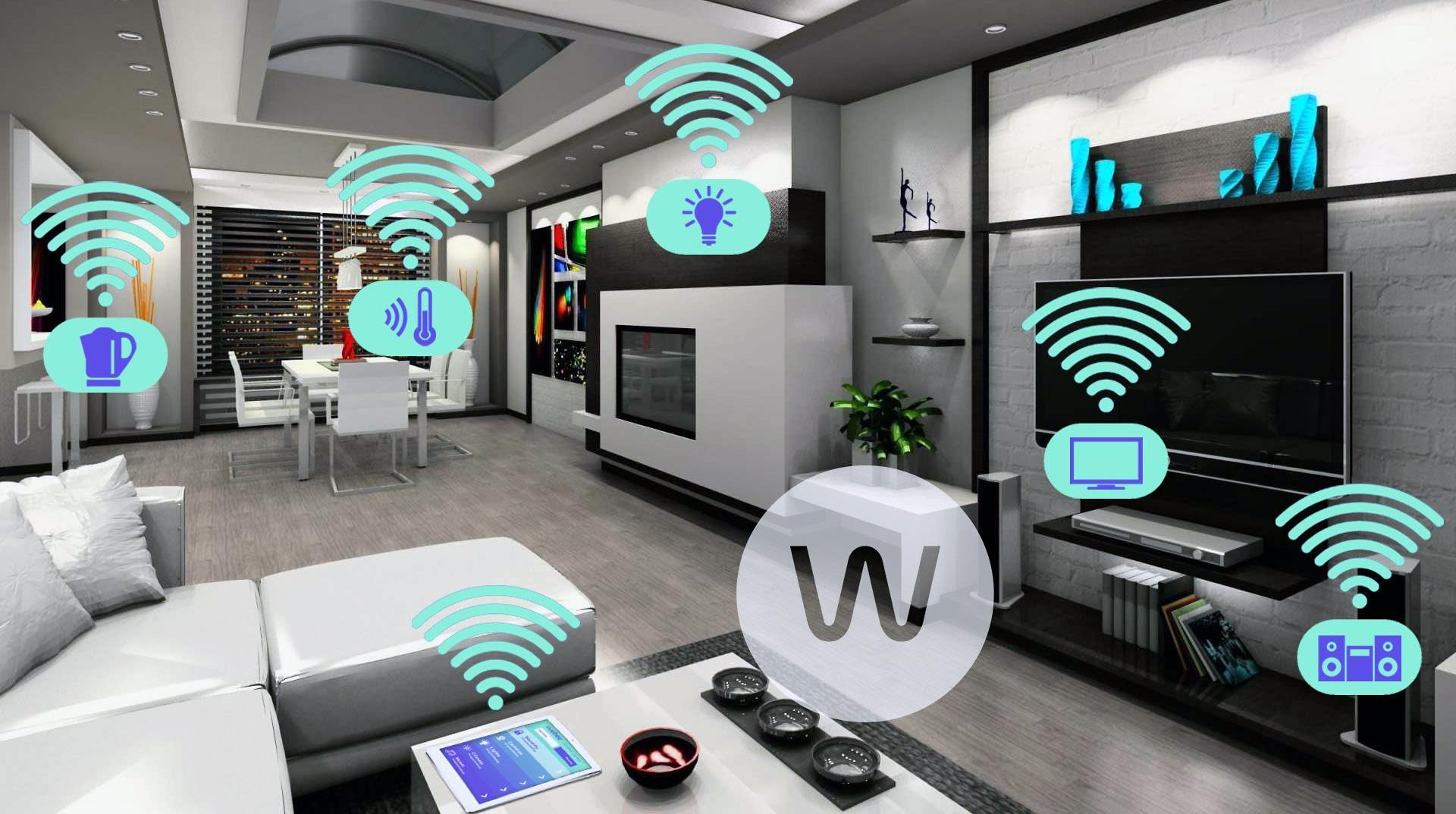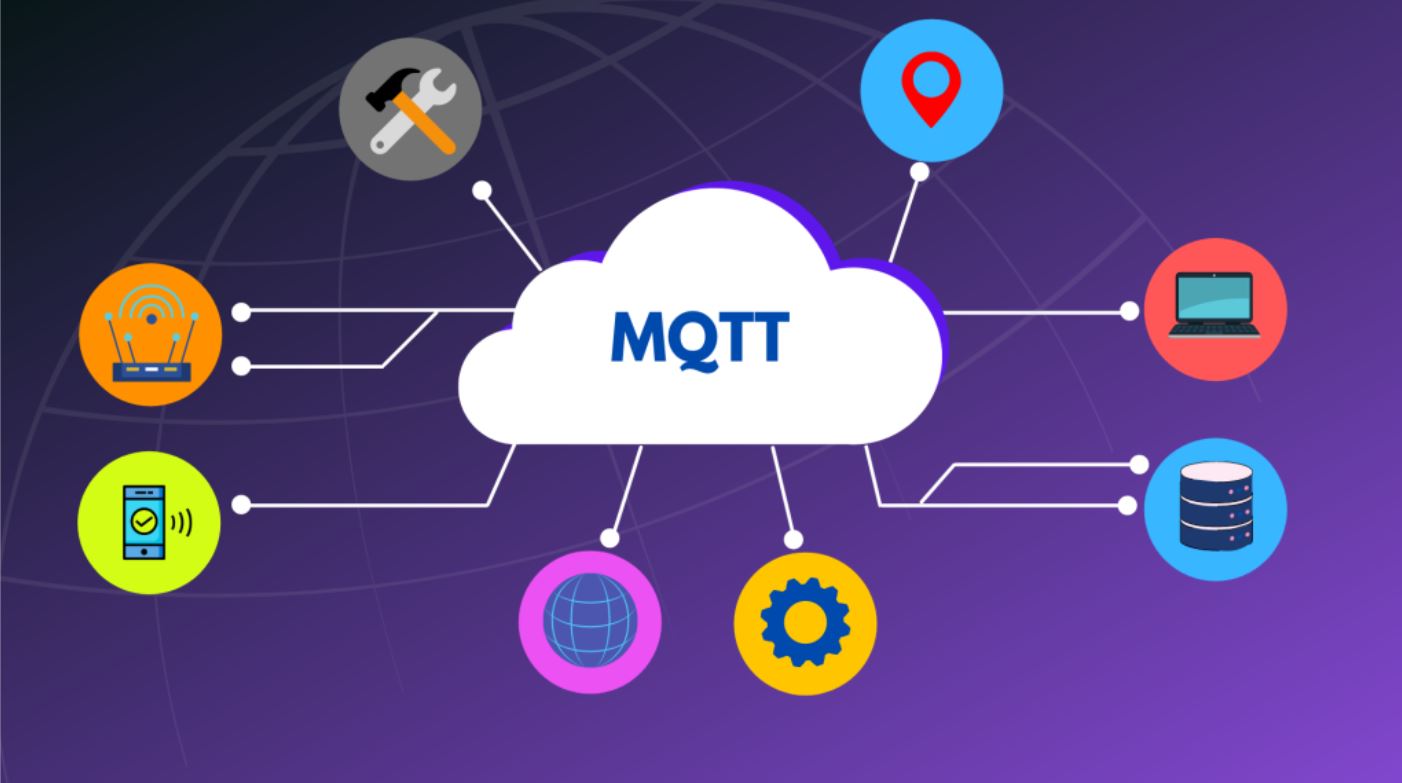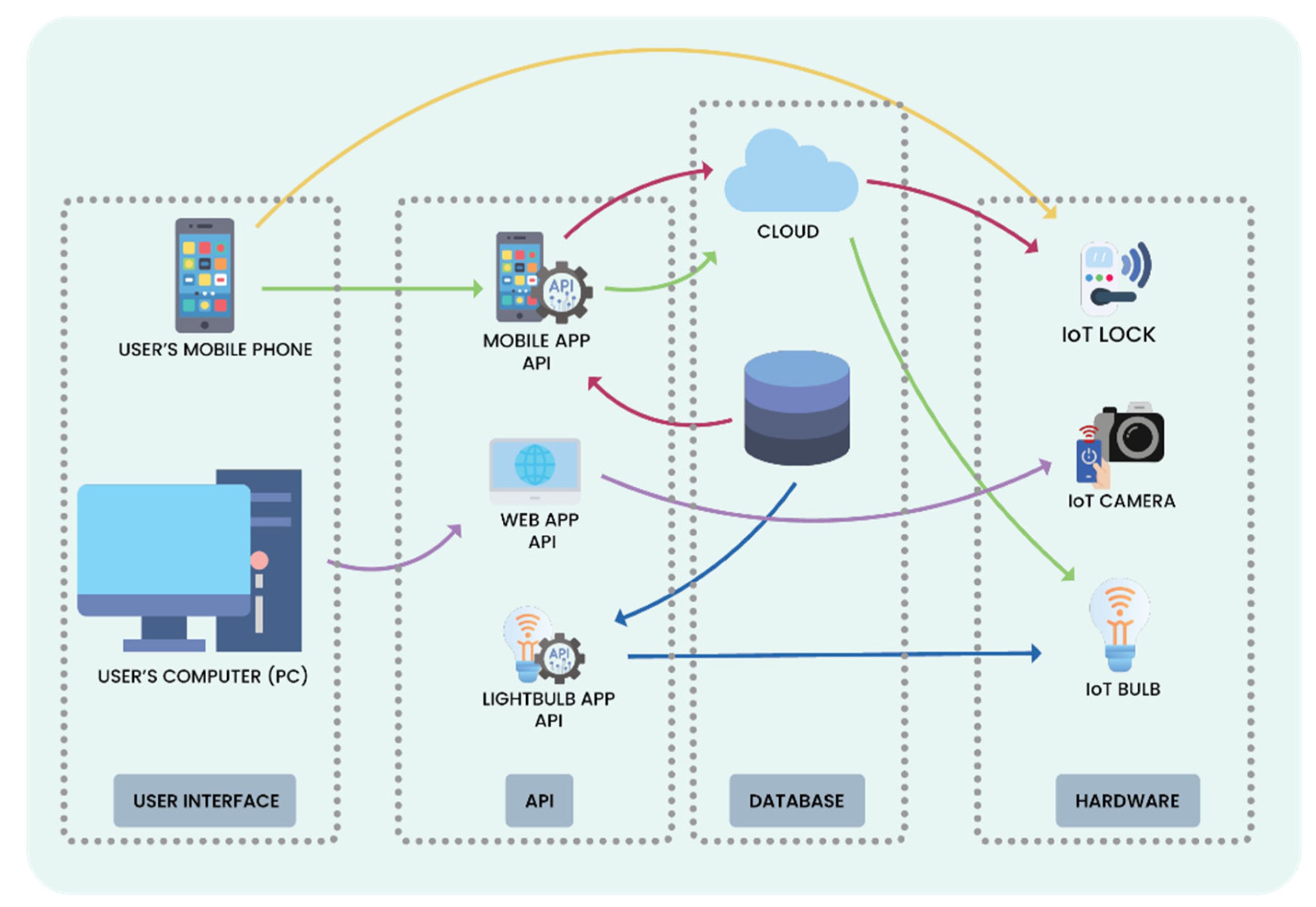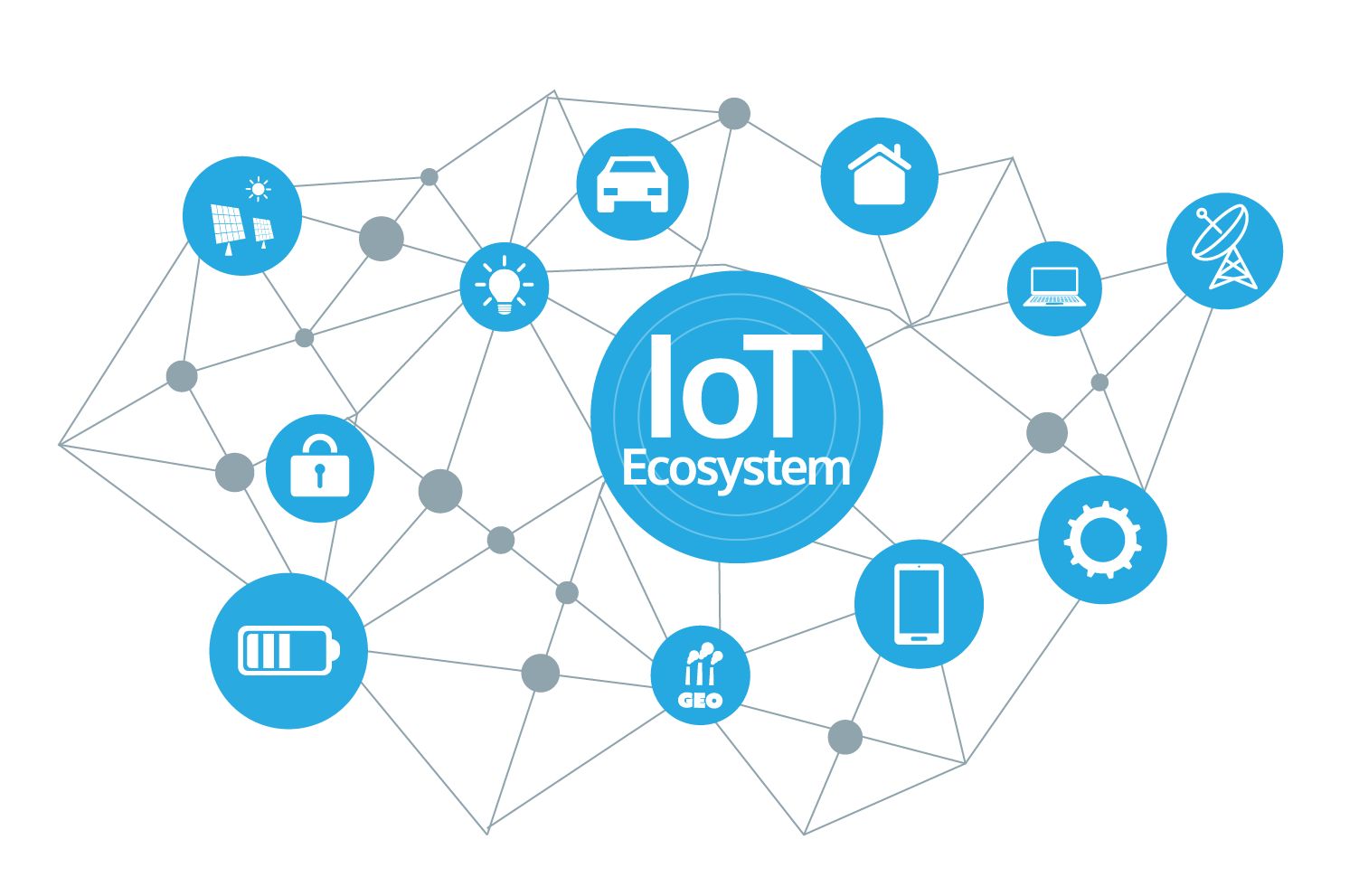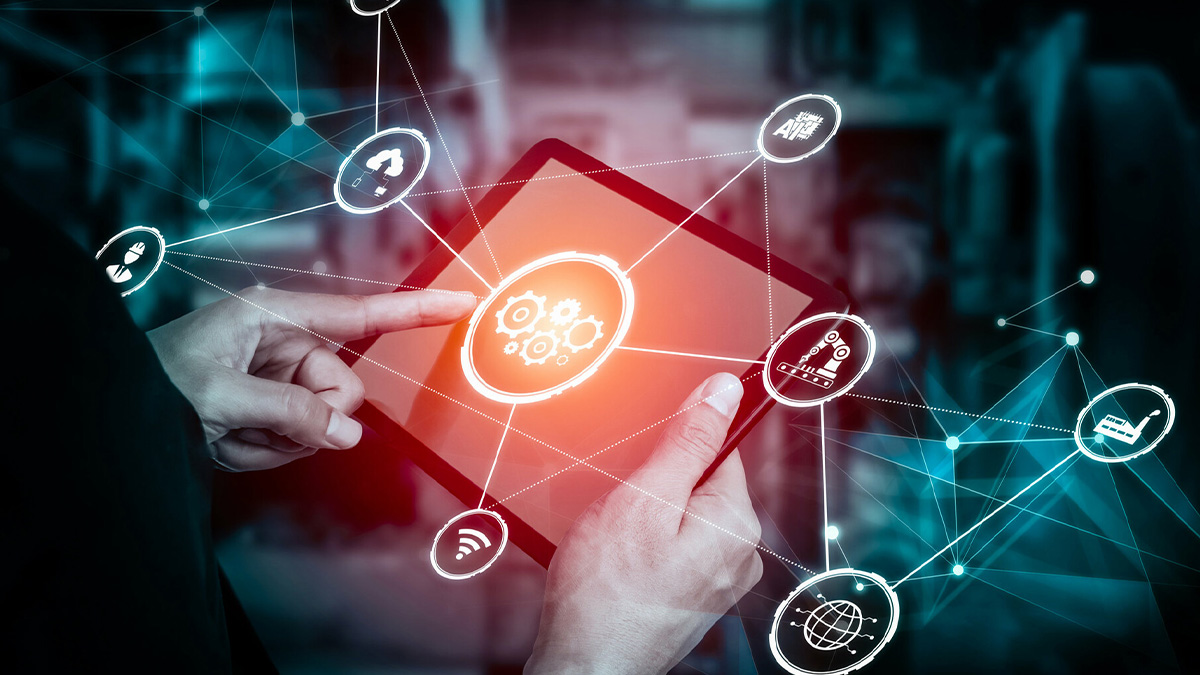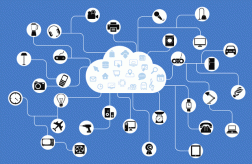What is IoT?
IoT, or the Internet of Things, is a rapidly growing network of interconnected physical devices that communicate and exchange data over the internet. These devices can be anything from everyday objects like refrigerators and thermostats to complex systems such as industrial machinery and smart cities. The underlying principle of IoT is to connect these devices and enable them to collect and share data, facilitating automation, analysis, and decision-making processes.
The concept of IoT revolves around the idea of embedding sensors, actuators, and software into everyday objects to connect them to the internet. This integration allows these devices to send and receive data, enabling them to interact with each other and with us, the users. Through this seamless connection, IoT devices can provide valuable insights, increase efficiency, and improve our overall quality of life.
One of the key aspects of IoT is the ability of devices to communicate with each other in a decentralized manner. This means that the devices can independently make decisions based on the data they collect, without relying on a central control system. For example, a smart home system could automatically adjust the thermostat based on the weather data retrieved from an online source, or a fitness tracker could send your heart rate data to your doctor for analysis.
IoT technology encompasses various layers, including the physical devices, the connectivity protocols, the cloud infrastructure, and the software applications that analyze and utilize the collected data. These layers work together to create a seamless and interconnected network, enabling devices to communicate, share information, and execute tasks.
The applications of IoT are vast and diverse, ranging from smart homes and wearables to healthcare, transportation, agriculture, and manufacturing. By connecting devices and collecting data, IoT enables us to revolutionize industries, streamline processes, and create more sustainable, efficient, and convenient solutions.
As IoT continues to advance and evolve, it holds immense potential to transform how we live and work. With the ability to connect and communicate with the world around us, IoT has the power to unlock endless possibilities and create a more connected and intelligent future.
Early Origins of IoT
The roots of IoT can be traced back to the early 1980s when the idea of connecting devices and enabling them to communicate first took shape. The concept was initially discussed by a group of researchers at Carnegie Mellon University who explored the possibilities of connecting vending machines to the internet to monitor their inventory levels remotely. This early experiment laid the foundation for the future development of IoT.
However, it wasn’t until the 1990s that the term “Internet of Things” was coined. The credit for popularizing the concept goes to Kevin Ashton, a British technology pioneer, who used the term in a presentation he made to Procter & Gamble. Ashton envisioned a future where everyday objects could be connected to the internet and communicate with each other without human intervention.
During this time, the technological advancements in communication protocols and miniaturization of electronic components paved the way for the expansion of IoT. The emergence of RFID (Radio Frequency Identification) technology played a crucial role, as it allowed objects to be identified and tracked through wireless communication.
Further progress was made in the late 1990s with the development of IPv6 (Internet Protocol version 6), which provided a larger address space to accommodate the growing number of connected devices. This breakthrough made it possible to assign unique IP addresses to each device, enabling seamless communication and integration within the IoT ecosystem.
The early adoption of IoT was primarily seen in industrial applications, where sensors and actuators were used to monitor and control various processes. Industries such as manufacturing, logistics, and energy management benefitted from the deployment of IoT technologies, leading to improved efficiencies, cost savings, and enhanced productivity.
As technology continued to evolve, the cost of sensors and connectivity decreased, making IoT more accessible to a wider range of applications. This opened the door for the integration of IoT into consumer devices and everyday objects, such as smart homes, wearables, and connected appliances.
Today, we are witnessing the rapid growth and proliferation of IoT across various industries and sectors. The advancements in cloud computing, data analytics, and artificial intelligence have further propelled the expansion of IoT, enabling the processing and analysis of vast amounts of data generated by connected devices.
The early origins of IoT set the stage for the revolution we are experiencing today. The vision of connecting devices and harnessing their collective potential is becoming a reality, with IoT poised to reshape industries, enhance our lives, and drive innovation for years to come.
The Concept of Connecting Devices
The concept of connecting devices is at the core of the Internet of Things (IoT). It involves integrating everyday objects and devices with sensors, software, and communication technologies to enable them to collect and share data over the internet. This connectivity allows devices to interact with each other and with users, creating a networked ecosystem where information flows seamlessly.
Connecting devices is achieved through a combination of hardware and software components. Sensors and actuators are embedded within objects to gather data and perform actions based on that data. These sensors can include temperature sensors, motion sensors, GPS receivers, and many others, depending on the specific application.
The data collected by these sensors is then transmitted through various communication protocols, such as Wi-Fi, Bluetooth, or cellular networks, to centralized servers or cloud platforms where it can be stored, processed, and analyzed. This enables real-time monitoring, analysis, and control of the connected devices.
One of the main goals of connecting devices is to enable automation and remote control. For instance, in a smart home, connecting devices allows homeowners to remotely control thermostats, lighting systems, and security cameras through their smartphones. Similarly, in industrial settings, connecting devices enables remote monitoring and control of machinery and processes, leading to increased efficiency and reduced downtime.
Another aspect of connecting devices is the concept of interoperability. Devices from different manufacturers and with different purposes need to be able to communicate with each other seamlessly. This requires standardization of communication protocols and data formats, ensuring that devices from different vendors can work together harmoniously.
Furthermore, connecting devices also entails addressing issues related to power consumption, security, and privacy. Since IoT devices often rely on batteries or have limited power sources, optimizing power consumption is crucial to ensure longevity and sustainability. Security measures, such as encryption and authentication, need to be implemented to protect the data being transmitted and ensure the integrity of the system. Privacy concerns are also addressed by adhering to data protection regulations and user consent mechanisms.
The concept of connecting devices has transformed the way we interact with our surroundings and the objects in our environment. It has opened up endless possibilities for innovation across industries such as healthcare, transportation, agriculture, and manufacturing. By enabling devices to share information and perform actions autonomously, connecting devices has the potential to revolutionize our daily lives, making them more efficient, convenient, and interconnected.
The Term “Internet of Things”
The term “Internet of Things” (IoT) was coined by Kevin Ashton in the late 1990s to describe the concept of a network of interconnected devices that communicate and share data. Ashton, a British technology pioneer, used the term during a presentation to Procter & Gamble, where he discussed the potential of connecting everyday objects to the internet.
The term itself, “Internet of Things,” is an extension of the existing concept of “Internet of Everything,” which refers to the interconnectedness of all things on the internet. However, Ashton’s focus was specifically on the connection of physical objects that were not traditionally internet-enabled, such as household appliances, vehicles, and industrial machinery.
At the time, the concept of IoT was groundbreaking and captured the imagination of many tech enthusiasts and researchers. It represented a paradigm shift in how objects interacted with each other and with humans. It proposed a future where everyday objects would be able to communicate, collaborate, and make informed decisions by leveraging the power of the internet.
The term “Internet of Things” gained traction and popularity in the early 2000s as more industries and experts began to recognize the potential of connecting devices and harnessing the data generated by them. It provided a concise and easily understandable way to refer to this emerging technology trend.
The essence of the term lies in the idea that these interconnected devices would not only be able to connect to the internet but also to each other. This connectivity would allow devices to share data, exchange information, and collaborate in ways that were not possible before.
The Internet of Things is built on the foundation of various technologies, including embedded systems, wireless communication, cloud computing, data analytics, and artificial intelligence. These technologies work together to create a seamless ecosystem where devices can communicate, gather data, and generate valuable insights.
Today, the term “Internet of Things” has become widely recognized and is commonly used to describe the vast network of connected devices and their impact on various industries and everyday life. It has become an umbrella term that encompasses a wide range of applications, from smart homes and cities to healthcare, agriculture, and transportation.
The term “Internet of Things” has played a crucial role in popularizing and defining this transformative technology. It has helped shape the narrative around the growing importance and potential of connected devices, driving advancements and innovation in this field.
Popularization of IoT Concept in the 1990s
The concept of the Internet of Things (IoT) gained significant attention and popularity in the 1990s, thanks to the contributions of visionary thinkers and technological advancements during this period. It was a transformative era that laid the foundation for the widespread adoption and implementation of IoT in various industries and everyday life.
One of the key figures in popularizing the IoT concept was Kevin Ashton, a British technology pioneer and co-founder of the Auto-ID Center at MIT. In the late 1990s, Ashton presented the idea of connecting everyday objects to the internet and coined the term “Internet of Things” (IoT) during a presentation to Procter & Gamble. His vision of a world where objects could communicate, collaborate, and make informed decisions without human intervention resonated with many people and sparked interest in the potential of IoT.
During this period, technological advancements were instrumental in advancing the adoption of IoT. The miniaturization of electronic components made it possible to embed sensors, actuators, and communication capabilities into everyday objects. This, in turn, enabled these objects to collect data, communicate over networks, and interact with other devices.
In addition to the development of hardware components, progress was made in communication protocols that facilitated the seamless connectivity of IoT devices. Wireless communication technologies, such as Bluetooth and Wi-Fi, played a crucial role in enabling the exchange of data between devices, while protocols like Zigbee and Z-Wave allowed for low-power, long-range connectivity for IoT applications.
Furthermore, advancements in computing and data storage capabilities were crucial in handling the massive amounts of data generated by connected devices. Cloud computing emerged as a game-changer, providing scalable and cost-effective solutions for storing, processing, and analyzing IoT data. This paved the way for real-time monitoring, predictive analytics, and actionable insights derived from the vast amounts of data collected by IoT devices.
The popularization of IoT in the 1990s was not limited to academic circles or research laboratories. Major corporations and industry leaders recognized the potential impact of IoT and began exploring its applications. Industries such as manufacturing, logistics, and transportation were at the forefront of IoT adoption, leveraging connected devices for inventory management, supply chain optimization, and asset tracking.
Add to this the increasing affordability of IoT technology, as costs decreased due to economies of scale and advancements in manufacturing processes. This made IoT more accessible to a wider range of organizations and individuals, leading to a rapid proliferation of connected devices and IoT solutions.
The combination of visionary thinkers, technological advancements, and early industry adoption set the stage for the popularization of IoT in the 1990s. The groundwork laid during this period paved the way for the exponential growth and transformative impact that we are witnessing today in industries ranging from healthcare and agriculture to smart homes and cities.
IoT’s Impact on Industries and Everyday Life
The Internet of Things (IoT) has had a profound impact on various industries and everyday life, transforming the way we live, work, and interact with the world around us. From healthcare and agriculture to transportation and smart homes, IoT has revolutionized numerous sectors and enhanced the efficiency, convenience, and sustainability of our everyday lives.
In the healthcare industry, IoT has revolutionized patient care and monitoring. Connected medical devices and wearables enable remote patient monitoring, allowing healthcare professionals to track vital signs and health data in real-time. This has improved the accuracy of diagnoses, prevented medical emergencies, and enhanced overall patient outcomes. Additionally, IoT has enabled the development of smart medical devices and telehealth solutions, expanding access to healthcare services and enabling personalized treatments.
Agriculture has also been significantly impacted by IoT. Farming operations are being optimized through the use of IoT-enabled sensors that monitor soil moisture, weather conditions, and crop health. This data-driven approach allows farmers to make informed decisions regarding irrigation, fertilization, and pest control, ultimately leading to higher crop yields and more sustainable farming practices. Furthermore, IoT-enabled precision agriculture techniques enable the efficient use of resources, minimizing waste and reducing the environmental impact of farming.
In the transportation industry, IoT has improved efficiency, safety, and sustainability. IoT-enabled telematics and tracking systems allow for real-time monitoring of vehicles, optimizing fleet management and logistics. Sensors embedded in vehicles collect data on fuel consumption, engine performance, and maintenance needs, enabling predictive maintenance and reducing downtime. Additionally, IoT plays a vital role in the development of intelligent transportation systems, such as traffic management and autonomous vehicles, leading to safer and more efficient commutes.
IoT has also made a significant impact on our homes and daily lives. Smart home devices, such as thermostats, lighting systems, and security cameras, can be connected and controlled remotely, offering convenience, energy savings, and enhanced security. Connected appliances, such as refrigerators and washing machines, can communicate with each other and with users, optimizing energy consumption and providing greater convenience. Wearable devices, such as fitness trackers and smartwatches, track our health and fitness data, motivating us to live healthier lifestyles.
In industrial settings, IoT has optimized manufacturing processes, increased efficiency, and reduced costs. Industrial IoT (IIoT) allows for real-time monitoring and control of machinery, predictive maintenance, and supply chain optimization. Connected sensors and actuators provide valuable data on machine performance, enabling businesses to make data-driven decisions that streamline operations and maximize productivity.
Furthermore, IoT has the potential to drive sustainability efforts on a global scale. By optimizing resource consumption, reducing waste, and enabling smart energy management, IoT technologies contribute to a more sustainable future. Smart grids and smart buildings, enabled by IoT, allow for efficient energy distribution and consumption, reducing carbon emissions and promoting renewable energy integration.
The impact of IoT on industries and everyday life is palpable. It has transformed the way we operate, bringing automation, efficiency, and connectivity to numerous sectors. With increasing advancements and adoption, IoT is expected to further revolutionize industries and continue to enhance our daily lives in ways we have yet to imagine.
Conclusion
The Internet of Things (IoT) has emerged as a transformative technology that connects devices, objects, and systems, enabling them to share data and communicate seamlessly. From its early origins and popularization in the 1990s to its impact on industries and everyday life, IoT has revolutionized the way we live, work, and interact with the world around us.
IoT has expanded our capabilities by connecting everyday objects and turning them into intelligent devices. By integrating sensors, actuators, and communication technologies, IoT has enabled devices to gather data, make informed decisions, and perform actions autonomously. This connectivity has unlocked endless possibilities, leading to significant advancements in industries such as healthcare, agriculture, transportation, and manufacturing.
In healthcare, IoT has improved patient care through remote monitoring and personalized treatments. Connected devices and wearables enable real-time tracking of health data, leading to more accurate diagnoses and proactive interventions. Similarly, in agriculture, IoT has optimized farming practices with precision agriculture techniques, conserving resources and increasing crop yields sustainably.
The impact of IoT extends to transportation, where it has enhanced logistics, fleet management, and road safety through real-time tracking and intelligent systems. In our homes, IoT has brought convenience and energy efficiency with smart home devices and appliances that can be controlled remotely. Wearable devices have revolutionized personal fitness tracking and healthcare monitoring, empowering individuals to take charge of their well-being.
Industrial settings have seen significant improvements with IoT’s integration into manufacturing processes, enabling predictive maintenance, supply chain optimization, and improved productivity. IoT has also played a crucial role in promoting sustainability, with smart energy management and resource optimization initiatives contributing to a more eco-friendly future.
Looking ahead, the potential of IoT continues to expand. Advancements in cloud computing, data analytics, and artificial intelligence will further enhance the capabilities of IoT, enabling more sophisticated and intelligent applications. As more devices become interconnected, the world will become increasingly connected, creating new opportunities for innovation, efficiency, and convenience.
In conclusion, the Internet of Things has transformed industries and our daily lives, creating a world where devices communicate, collaborate, and make our lives more connected and intelligent. As IoT continues to evolve and mature, it promises an exciting future where technology empowers us, improves our efficiency, and enhances our quality of life.









